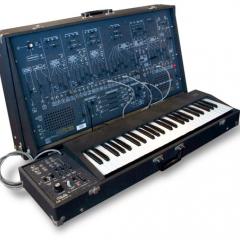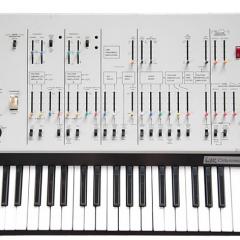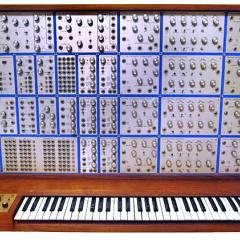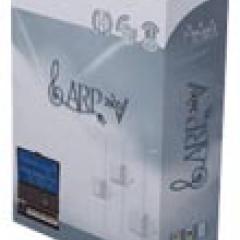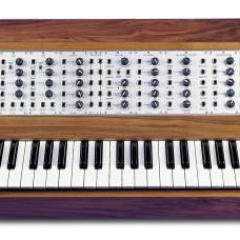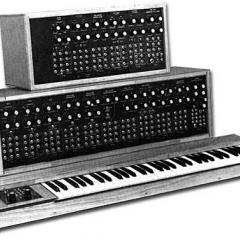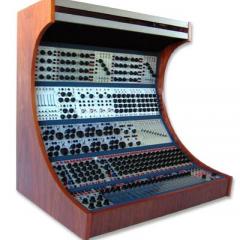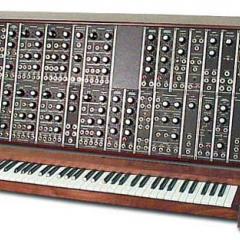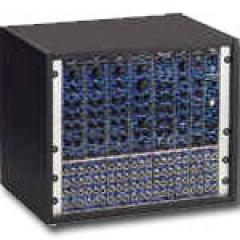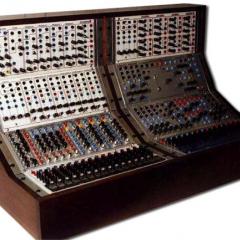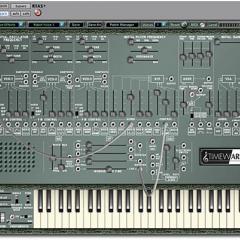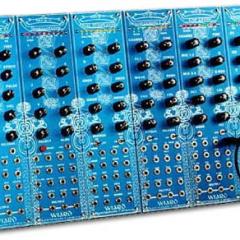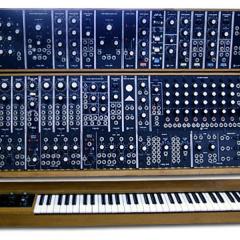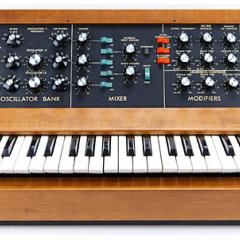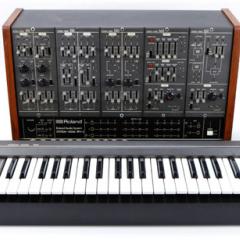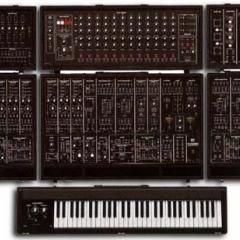MacBeth Studio Systems M5

At first glance, it looks like an ARP 2600. A very big ARP 2600. But this is actually a modern analog synthesizer; it is the MacBeth M5. While reminiscent of the 2600, this is not a clone. It's a semi-modular synthesizer that features a significant array of real-time analog controls with absolutely no digital circuitry at all. Totally faithful to the design and concept of early analog synthesizers, all sounds must be created by hand, tweaking knobs, patching cables and using a bit of creativity. There is no patch memory, no MIDI and no USB. Just really great analog sounds.
Sound and construction quality are all top notch! The M5 is quite big, the front panel measuring 30" wide by 26" deep and positioned at an 80 degree angle for maximum playability. There is a 3" drop at the front of the unit to allow for a keyboard to be positioned directly in front of the M5 (use of a Kenton MIDI-CV converter may be needed to control it from a standard MIDI keyboard controller). The controls and sockets are generously spaced out in a logical fashion. The entire synth is housed in a solid, rugged and durable steel casing although some 'custom' versions have been built into wooden enclosures. Likewise, there are some 'custom' models that also have alternative paint-jobs on the face plate, including Blue, Red and White models.
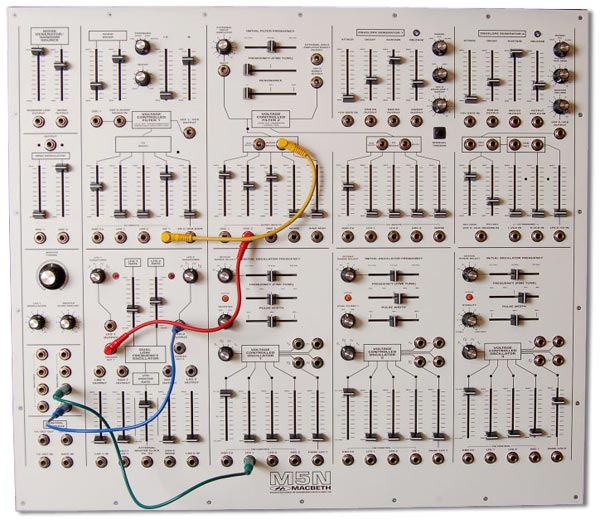
Being semi-modular essentially means that this is a modular synth, but all the modules have been pre-configured and somewhat pre-connected already by the manufacturer. Some of the diagrams on the face-plate illustrate the pre-wired (normailzed) connections for each of the modules, although there are still plenty of patch points for making your own connections. To start, there are three oscillators which offer your basic sine, triangle, sawtooth and square (w/ PWM) waveforms, plus a noise generator that can output white, pink or a unique Slow Random noise modes. In addition to these sound generators, there is an external audio input pre-amplifier for bringing in other sounds for processing through the M5. The oscillators all offer a broad range of tuning, even micro-tuning possibilities.
There are two discrete filters on-board: a 24 dB/oct lowpass transistor-ladder type filter and a 12 dB/oct with Low Pass, Band Pass, High Pass and Notch filter types. Both filters can self oscillate and feature ADSR envelope generators. There are two LFOs with four waveforms: Rising Ramp, Falling Ramp, Triangular and Rectangular. Each LFO features its own Rate control, output, and trigger outputs. Sample-And-Hold is also possible with LFO 2 (and also from the Noise Gen). There are four VCAs in the M5. One for each of the two voltage-controlled filters, and the other two VCAs are incorporated into the Voltage Controlled Panning circuit / stereo output.
Additionally, there is a Ring Modulator, Spring Reverb, two Audio Mixers, two Control Voltage Mixers and two Lag Processors. The Audio Mixers allow you to control the level of the oscillators going into the VCF (filters) (and they can be pushed into overdrive for some distortion) and they can also be used to send the oscillator signals for processing elsewhere in the synth (or outside the synth to an external processor). The Control Voltage Mixers also work with the VCF (filters), allowing a variety of sources to affect the timbre of the relevant filter: VCF 1 has inputs for Keyboard CV, LFO 1, LFO 2 and EG 2, and VCF 2 has inputs for Keyboard CV, LFO 1, OSC 3 and the Noise Generator. The Sample & Hold processors are fed into the Lag Processors, which provide a 'slewing' function very similar to the Analog Glide used in the Keyboard CV part of the synth.
The M5 is really a wonderful instrument. Many modern modular analog systems continue the modular concept of providing users custom options and possibilities in designing their own instrument. But that can be a daunting and expensive task for most musicians. Much like the way ARP redefined the modular synth by offering the semi-modular concept: a pre-conceived modular system with much of the flexibility of traditional modulars and fewer of the limitations of compact keyboard synths, the M5 brings the semi-modular concept to today's musician's. On top of that, the M5 makes no attempt to abandon its analog heritage in favor of digital components or modern functions - for better or worse. The M5 is a true analog synthesizer reminiscent of the ARP 2600 but with expanded features and possibilities and upgraded analog componentry.
The M5 (and M5N) may seem capable of kicking the original ARP 2600s to the back of the closet, but these synths are in fact more rare than the 30 year old 2600! To date only about 90 M5s have been produced and sold, as they are all hand built to order at MacBeth Studio Systems. But unlike the 2600, these are still being assembled and are available for purchase from MacBeth Studio Systems and their distributors.
Demos & Media
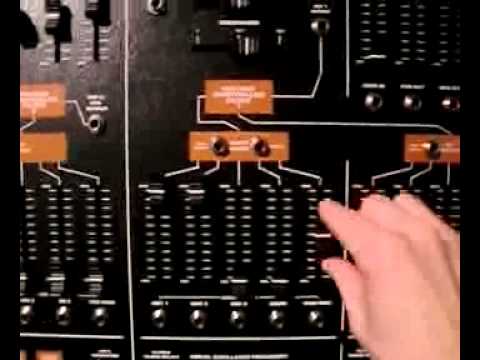
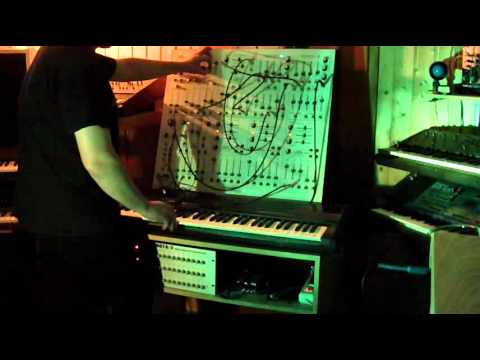
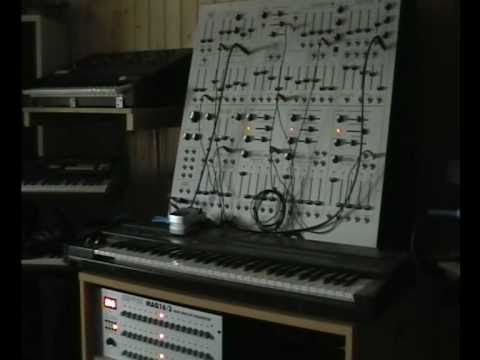
Specifications
Resources
Images from MacBeth Studio Systems
Reviewed March, 2009.
